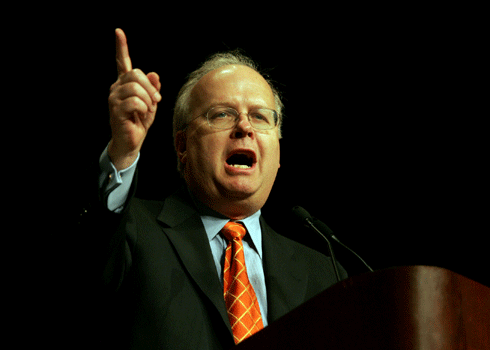Anonymous outside interests have gone from being a relatively minor source of funding for campaign-season television ads to being the dominant player in 2010, according to figures compiled by the Sunlight Foundation.
A new (and effective) Democratic messaging strategy — criticizing Republicans and their conservative backers for letting outside, anonymously funded groups run ads attacking candidates — isn’t an example of a party desperately looking for a new bogeyman. It’s backed up by data, freely available from the Federal Elections Committee.
The sea change is largely the result of the Supreme Court’s Citizens United ruling, overturning a ban preventing pressure groups and corporations from running so-called independent expenditure ads for or against a candidate (these are distinct from issue ads, which only mention candidates vis-a-vis their policy positions). As a result of that shift, the official party committees and candidates face direct contribution limits and must disclose their funders. PACs have a bit more leeway — they still face disclosure rules, but no donation limits and can make unlimited independent expenditures. Groups organized as non-profits, though, are unencumbered: they can take in as much money as they want, without having to disclose any of their donors.
The result has been extraordinary.


[Charts by Sunlight Foundation]
At this point in 2006 (the last midterm), the Democratic and Republican party committees accounted for 82 percent of all outside spending on express advocacy. Outside groups accounted for only 18 percent.
Fast forward to 2010, the numbers have flipped dramatically.
As of the end of last week, outside groups have spent more money on independent expenditures than have the party committees — 59 percent to 41 percent.
That’s not to say that before the Citizen’s United decision, politics was beanbag. Recall, for instance, the Swiftboat Vets attacks in 2004, backed by individual donors. What’s changed is that now corporations (and unions) can give unlimited amounts to independent expenditure groups, just like individuals.
And keep in mind, this comes in the wake of deliberate steps Barack Obama took in 2008 to consolidate the Democratic party’s power and limit donations to Dem-aligned outside groups. In absence of those steps, these numbers might be further skewed toward outside organizations. This is, in other words, a largely Republican-caused phenomenon, and exacerbated by the fact that many of their donors have abandoned Michael Steele and the RNC in favor of outside groups like the group American Crossroads, advised by Karl Rove.
Overall IE spending is significantly higher in 2010 than it was in 2006. Thus far, party committees and outside groups have spent nearly $180 million on elections; at this point in 2006, the combined total was just a hair over $140 million.
Ed note: This post has been updated.










